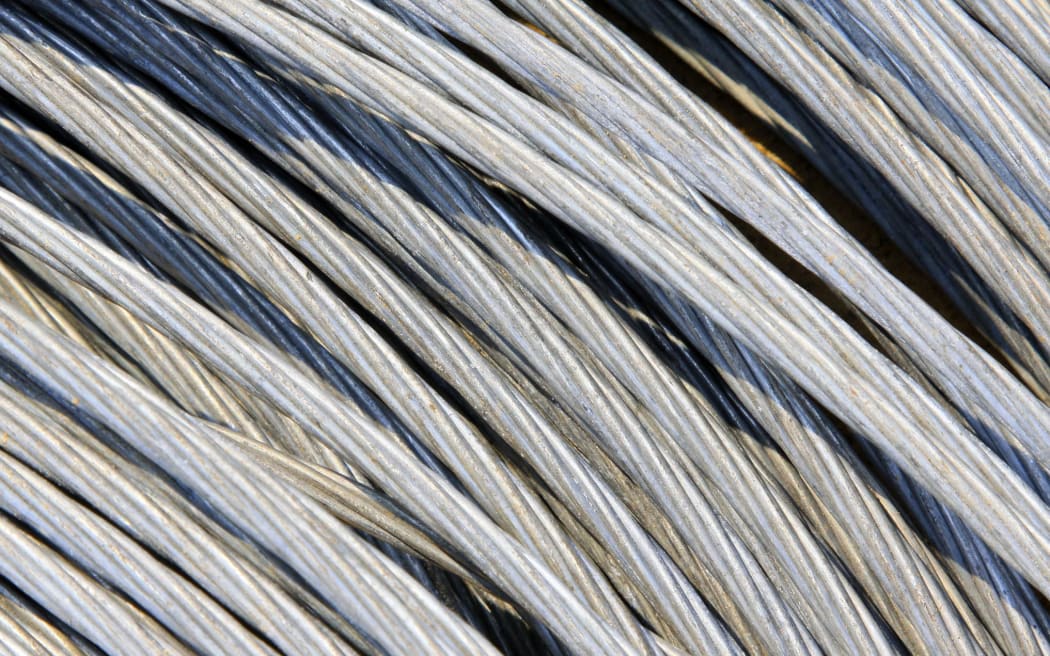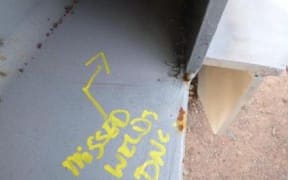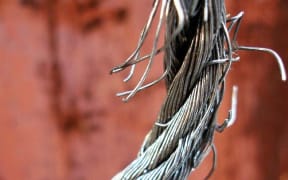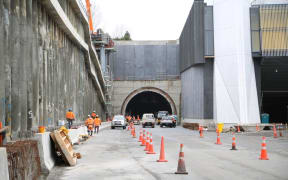One of the country's largest sewage tanks, on the edge of Manukau Harbour, has been built using steel that was not independently tested.

A quality control expert said the test certificates that came with the steel were certainly fake. Photo: 123RF
And a quality control expert who has overseen huge projects in Australia says the only test certificates that came with the steel, issued by the factory itself, are certainly fake.
Watercare's Mangere Digester 8 is the height of a two-storey building, with that much again below ground. It contains 8 million litres of sewage sludge behind concrete walls relying for strength on the steel strands encased within.
RNZ obtained the steel test certificates, produced in China by Fasten Group, from Watercare.
Watercare and the tank's builder Fletcher Construction said the highest level of independent construction monitoring ensured all the work was up to scratch.
Stewart Askey, who has 31 years' experience of quality control on huge Australian steel projects including for Rio Tinto, BHP and Woodside and has spent a lot of time in Chinese factories, said he had no doubt the test results were fake.
Mr Askey has sourced steel for Mill-Pro Hong Kong which in June warned that substandard steel was being imported.
"On the Mangere project we saw the test certificates on that. Every one of them was identical and that just doesn't happen in the real world.
"So I don't believe for a moment that those test certificates were accurate ... I suspect what's happened there is what normally happens with an unsupervised steel mill ... is that they have tested one strand, then said 'OK, that's a good result, we will just apply that same test result to all of the other strands and that saves us a whole lot of time and money doing testing'."
Mr Askey said he was backed up by the test results from stressing or tightening of the strand on-the-job at Mangere, which Watercare gave RNZ, as these showed there was variation.
Testing standard
The way the steel was supplied at Mangere would not be allowed in Australia, and is at odds with the aims of the committee that wrote the standard.
Fletcher Construction split up the standard - number 4672 - leaving off Part 2, which details the crucial testing regime.
"I would think that they would do that [split it] at their peril," said Sydney structural engineer Mark Turner, who has for 18 years chaired the trans-Tasman committee that wrote the standard.
"[The] committee always intended that pre-stressing steel made to comply with AS/NZS 4672.1 would be tested and subject to manufacturing control in accordance with part 2."
Mr Turner said an Australian infrastructure project "could not escape" from Part 2.
The Chinese manufacturer Fasten Group was not certified by the Australasian Certification Authority for Reinforcing Steel and Structural Steels (ACRS) in 2013 when it made the sewage tank steel.
The certification is not mandatory, but without it there is much less oversight.
The company was certified a year later.
Fasten carried out the only lab testing done on the steel, and its laboratory is accredited by the Chinese National Accreditation Service (CNAS).
But the Mangere certificates have no CNAS logo on them, so International Accreditation New Zealand (IANZ) does not recognise them.
The steel importer, HJ Asmuss, has not offered an explanation as to why the certificates are like this.
Steel tested on site
In a statement, Fletcher Construction said Watercare's engineer approved things and independent engineers' calculations backed it up.
Both it and Watercare referred to the on-site testing of each steel strand, which they passed. HJ Asmuss also said the on-site testing proved the steel was good.
Mr Turner said that was true - but to a very limited extent.
"That's a key part, if it holds up and it works - but that's not going to give you any prediction about how it's going to perform in the long term."
He said the need to be sure steel would stay taut inside concrete for years, and not 'relax', is what drove Queensland's roads agency to get Part 2 of the standard introduced in the first place, in 2007, and with explicit instructions about relaxation testing.
Fletcher Construction also split the Standard at its Waterview highway project, which RNZ reported on in June. It did not say why.
However, unlike Australia, New Zealand has not made Part 2 of the standard, that covers steel strand, wire and bar, compulsory.
That is something Mr Turner was not aware of until now, and is mystified by - though he insisted a reasonable person would treat it as mandatory here.
"The committee's expectation was that standard ... would be a key part of ensuring fitness for purpose."
Mr Askey, who for more than eight years was West Australian quality assurance manager for multinational Jacobs, said the Australian companies he worked for had learned the hard way, but New Zealand was ignoring those lessons.
"If people are still taking that chance they are going to find themselves in a world of pain," he said.
"If they are not testing materials independently in China by a reputable third party that has some degree of New Zealand or Australian engineering oversight, then that testing will be inaccurate.
"If you don't stand there and watch them, they will cheat - it's a simple as that."




